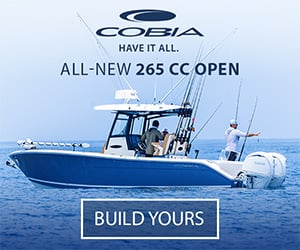Situational strategies & scenarios for the fall run.
As the fall run really heats up and builds to its climax, usually around Thanksgiving, you never really know what you are going to get; it’s what keeps us sharp and on our toes. No two fall migrations are ever the same so you have to be versatile and ready!
The key to fall success is to be prepared for whatever the surf gods send your way. A well-equipped surfcaster is always the happiest surfcaster in the end. Time on the water and experience will build your arsenal to where it needs to be; it will ultimately keep you from getting caught with the short straw and ruining what could be a great opportunity
For those aspiring to great success in the surf this fall, let’s look at a few situational strategies and scenarios that could, should or may pop up over the next couple of months of working the beaches from Sandy Hook to Cape May.
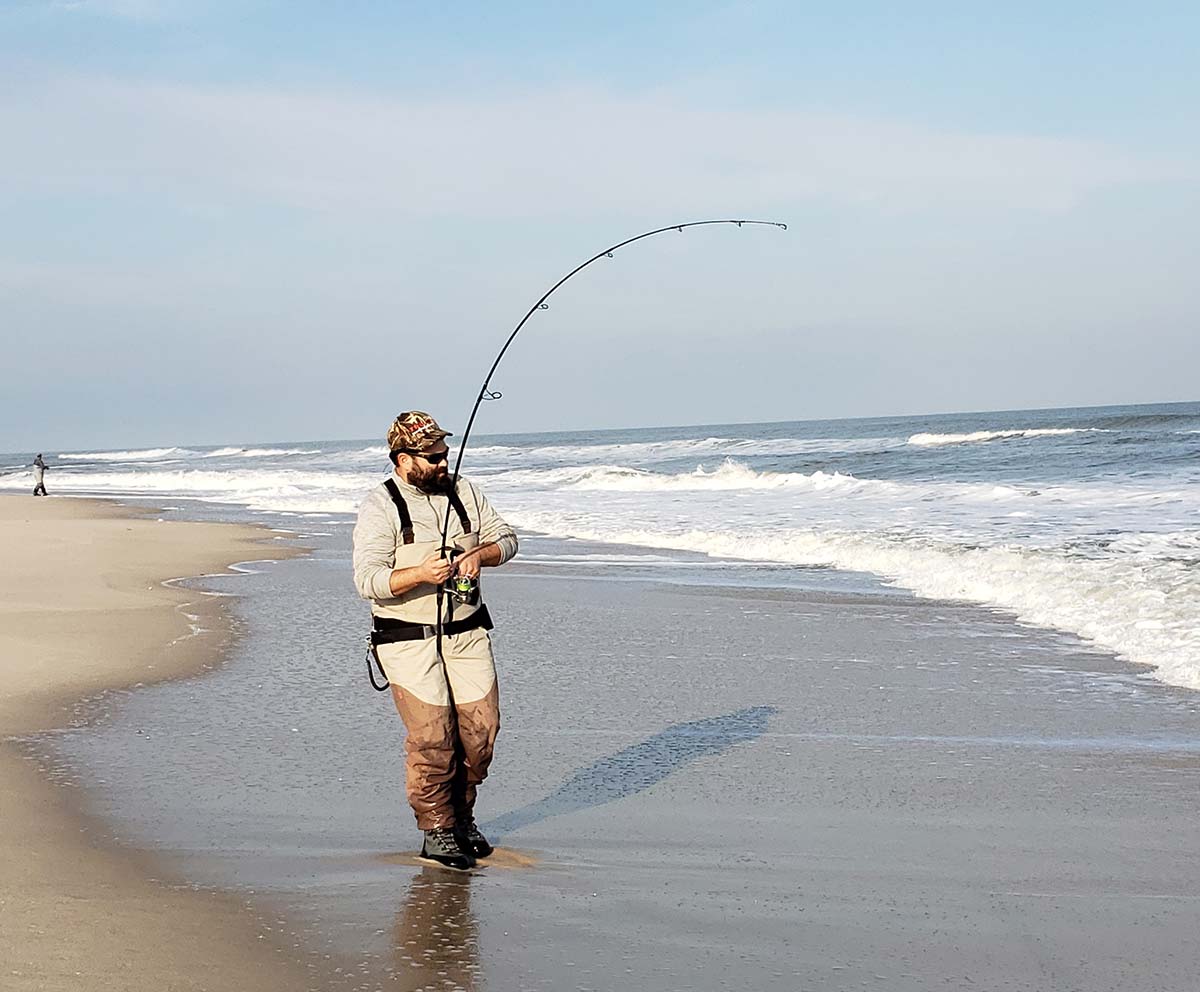
1 – Sand Eels
When the sand eels show up I start doing jumping jacks on the beach. A good artificial would be the remarkably productive tin and teaser combination. This combination is almost automatic if there are fish in front of you.
I will start with a 1-1/2- to 2-1/2-ounce tin behind a nice teaser. I would identify and nice teaser as a hook with bucktail and a couple nice hackle feathers in it. The weight of the tin will depend on how far you need to cast, what the wind is doing, and how that tin is reacting with the bottom. If it is getting down too fast and dragging, lighten up. Surfcasting is about modifications and adaption, pay attention to the details.
If you need more specifics check out the AOK 2-ounce T-Hex, the 1-1/3-ounce Deadly Dick, or the old standby AVA, A-17 (1-3/4) or A-27 (2-3/4), all are good starting points.
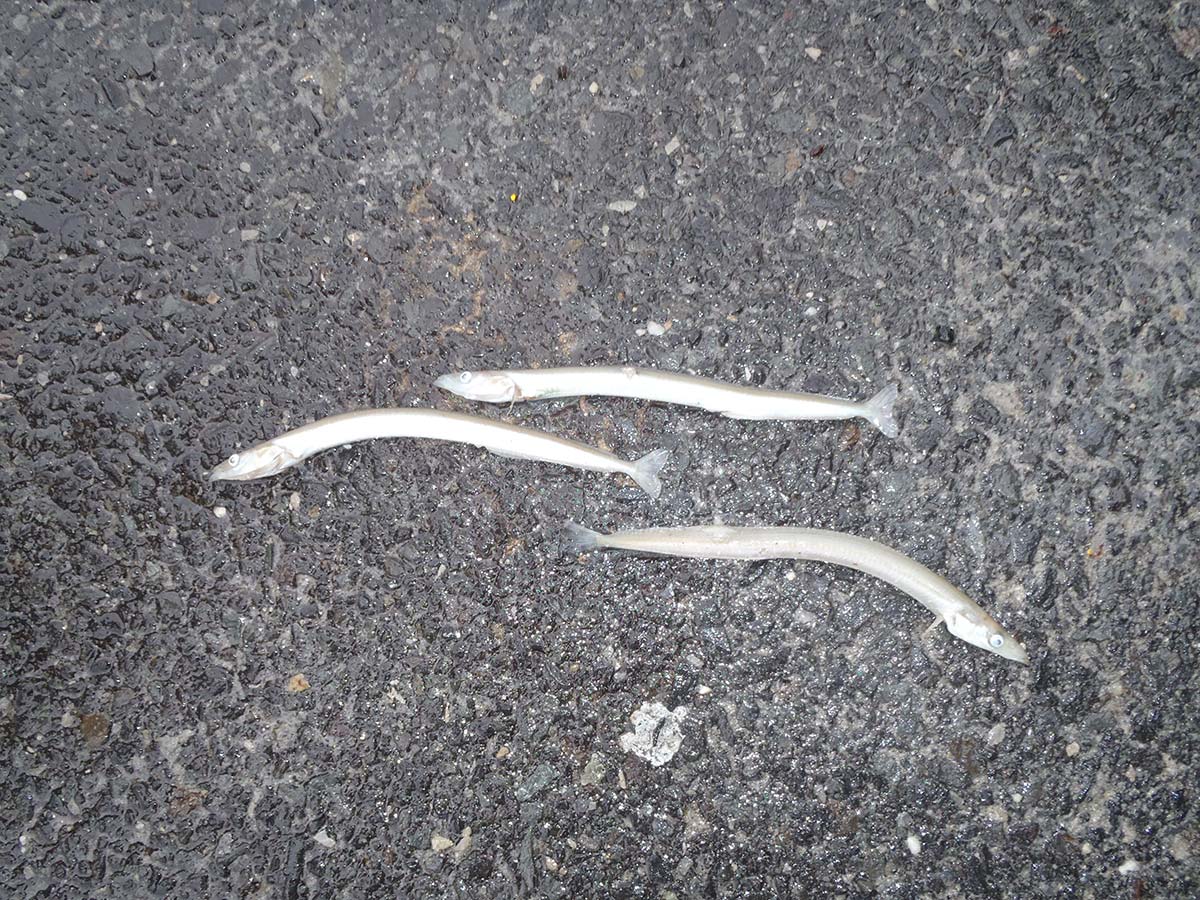
2 – Peanut Bunker
Juvenile menhaden are commonly referred to as “peanuts” because of their size and may range from 1 to 5 inches in length. When the peanuts show it is usually accompanied by action. Look for huge patch of dark, stained water, rippled on top with occasional flips. The bait pod can move very quickly. If bass or blues have found them you will see white slashes through the school with bait flying through the air! Just thinking about it makes my feet itch.
When peanuts school up and move along the beaches it can get crazy when stripers find them. Two lures immediately pop into my instinctive impulse. First I will reach for a popper which I’ll throw for as long as it produces; I love watching the surface strikes! There are two variations of poppers, one is what I call a hybrid popper the cross between a standard popper and a pencil popper and that is the Tsunami Talking Popper. It comes in multiple sizes but if I needed just one it would be the 2-3/8-ounce. For under 10 bucks it becomes an instant go-to popper even when the bluefish show up.
The second lure that is one of my all-time favorites is none other than the metal-lip swimmer, a small one. When the bunker are present there is nothing sweeter that watching this swimmer kick for its life and then get banged from the bottom up! The secret with this lure is that once it starts to swim, you have to keep it kicking, one brief stop and any investigating inquiry will be gone; I’ve seen it happen many times. A lot of time these lures may be hard to find in shops at the height of the run, so grab them when you see them.
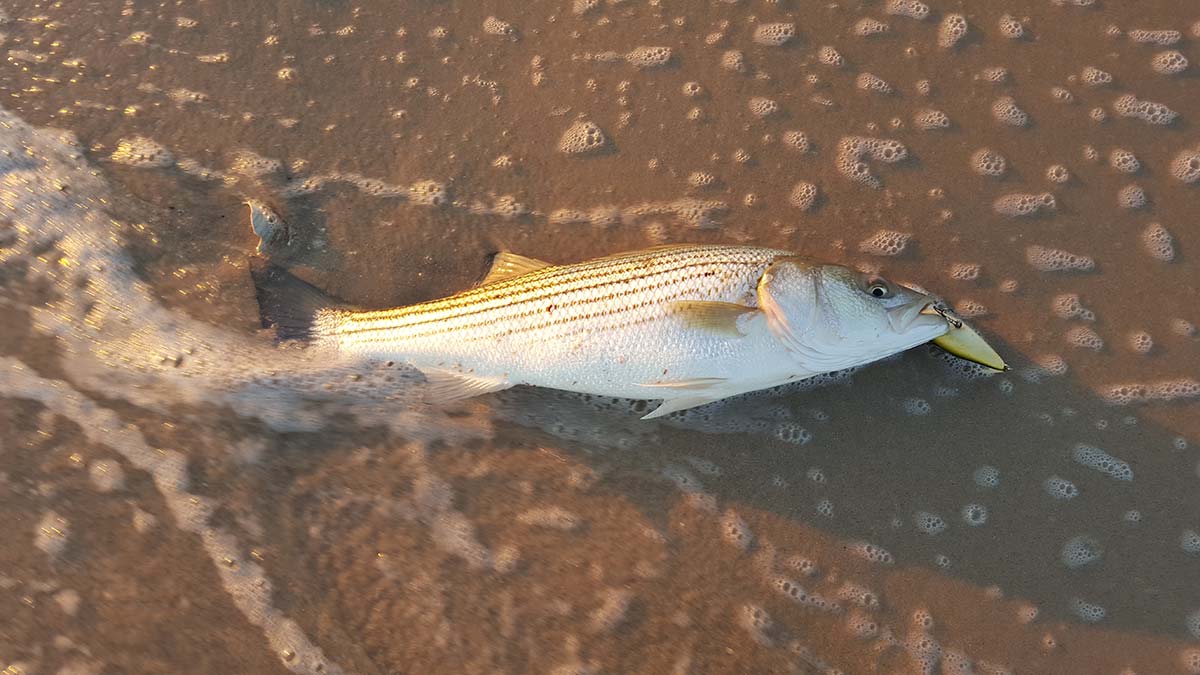
3 – Spearing/Alewife
One of my good friends is Art Nelson, a Jersey Shore free diver with over 50 years of staring at the underwater ecosystem in action. He has mentioned on numerous occasion the alewife and has told me they were all over the place and the most common bait along the beaches. Roughly a half-foot long, the alewife is an anadromous species of herring that can reach up to 16 inches in length. Until Art mentioned it, I never even heard of it as a primary bait; but it makes a lot of sense as I have seen that fish spraying or jumping out of the water and never really knew what it was.
A little smaller and more slender, the spearing – a.k.a. Atlantic Silverside – this is one bait that is always around from early in the season until late in the run. But both of these prey species bring what I call the hard plastic swimmer to relevance in the surf bag. The hard plastic swimmer covers a wide range of lures as there are many brands, the two biggest in the minds of surfcasters currently being the Daiwa SP Minnow and the Yo-Zuri Mag-Darter, both ranking right up there in the production/confidence lure category. I believe that a lot of their success comes because of how simple they are to use. How do you fish either of them? You cast it out, and then reel it back in (never fast).
My preferred usage for these are when I am not sure what bait is present. It is a universal lure, and by universal I mean it could match many different species.
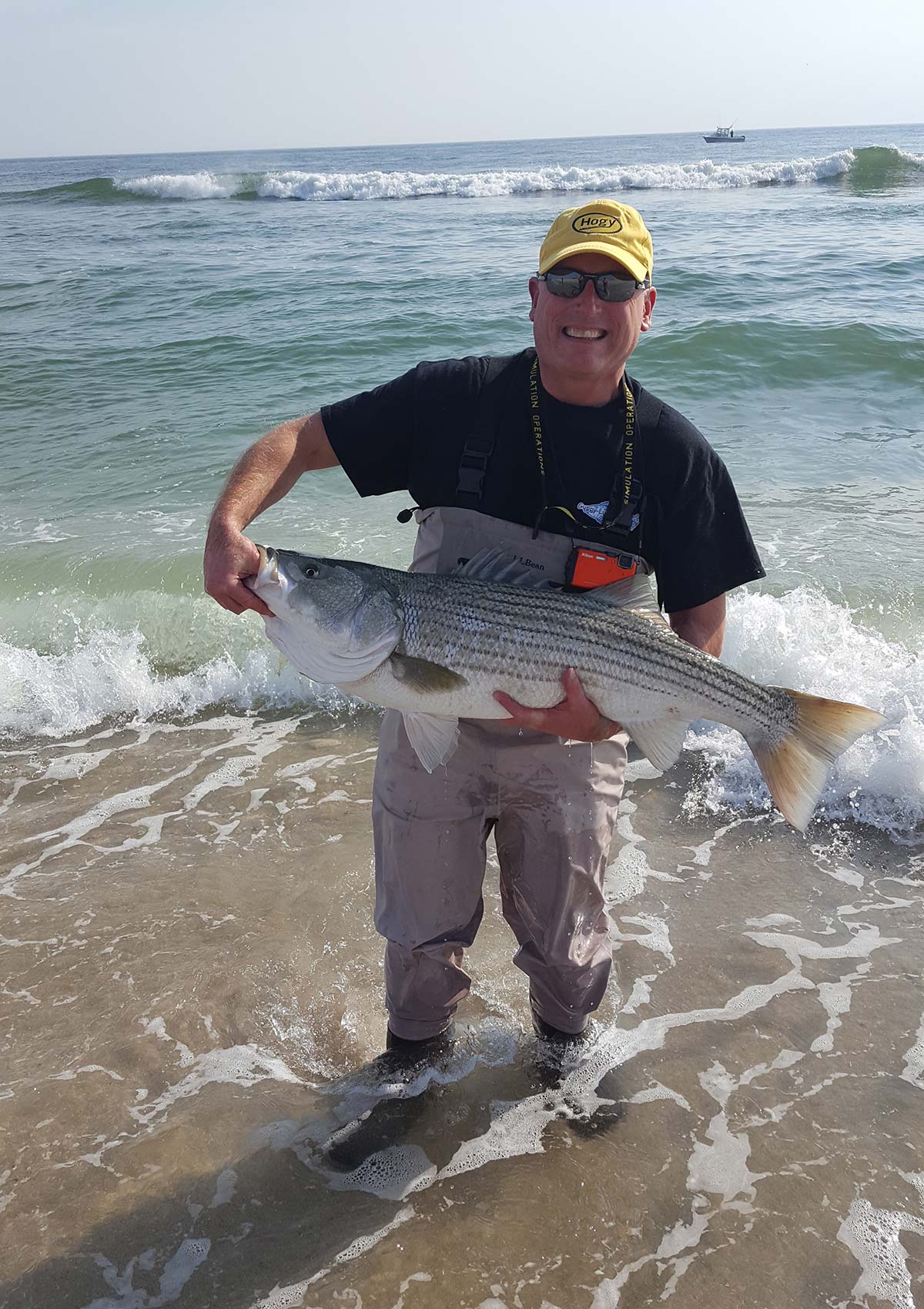
4 – Adult Bunker
Last time I checked anybody in the striped bass universe would give up his or her favorite combo (even an expensive one) in order to connect with a heavyweight lineside. Over the past few years the adult bunker have showed up in late October as have the heavyweight bass, and it has given the surf rat the opportunity to connect with a soaker before the fall run of smaller fish take over.
For this reason I have to mention the big pencil popper, it has to be carried from mid-October into November. When big fish are in the balance the opportunity may only present itself once and it often maybe for only a few seconds or minutes. It is at this time that you throw your best pencil. The criteria for a candidate is a great, consistent, caster, great side-to-side slapping action, and a distant last, well colored. When big bunker are getting harassed by lunker bass yellow is a very good option.
The most important key to a big fish rendezvous is vigilance. Paying attention, watching what is going on out there over the break, for this is where your opportunity will come from. I don’t have enough piggy’s to count the times I was sitting, watching a school of bunker with big fish going nuts out of range and watched the guys with 37 rods on their truck blowing by like on their way to a fire call, never seeing the potential off the beach. Meanwhile we wait for the bass to push the bait into the shallows and into our range. If the bass make the push, it could be a day for the ages. Patience is the key.
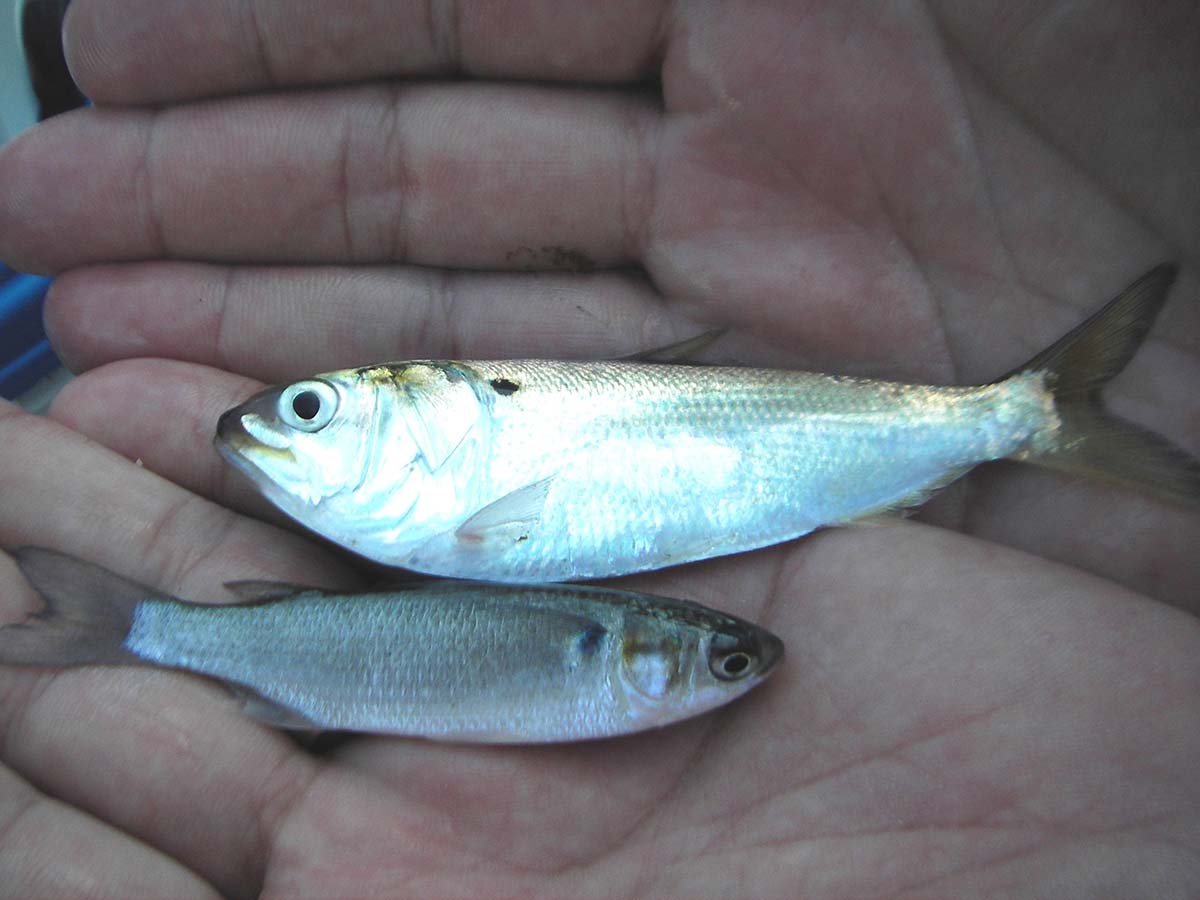
5 – Mullet
The mullet used to show up religiously in September but now it is a bit later. This is one of the most exciting baitfish as they will pull a good mix of bass, small bass will happily chase mullet and you will also have bigger bass swooping in for a shot at some mullet, I’ve caught some nice fish up to 30 pounds when the mullet checked in.
When mullet are in the neighborhood they are often seen on or near the surface. Fairly easy to spot as they cruise tightly schooled, you will see the waking-action of this powerful little fish. As they get chased you will see them spray and often greyhounding across the surface to escape the striper’s dinner plate.
If the opportunity presents itself to you and you are seeing schooling mullet in the waves it is time for you to get “blue.” No not the BB King blue, it’s time for the color blue; blue poppers and blue metal lip swimmers. For whatever has been etched into my brain, I feel strongly about the Smack-It and Smack-It Jr. poppers in blue of course. They look great, they work great, and thus they catch fish great. Chugging it across the surface, not too fast, not too slow is the perfect calling card for bass.
To make your time more productive and to be fish friendly, strongly consider laying down your barbs. Doing this allows for much quicker catch and release, plus it gets you right back to the fishing. It also allows the bass to get back into the water quickly with minimal damage. Lastly don’t ‘shake and bake’ your bass. Keep them off of the dry sand, unhook them by the water’s edge with minimal handling. And gosh darn it go have fun with one of our best fall resources.
I have stated also, numerous times that I love the winter fishing shows, and hopefully this pandemic will be under control by the time the show season rolls around. I use these winter shows to stock up on commercially hard-to-find lures. There are some great Jersey Shore plug builders to keep an eye out for; Hook-R lures are awesome, well thought-out and well colored swimmers! DT makes incredible surface and subsurface swimmers that are made to be fished.
There are many great builders, let’s support them! Especially now as we enter prime time for matching the hatch along the Jersey Shore.




